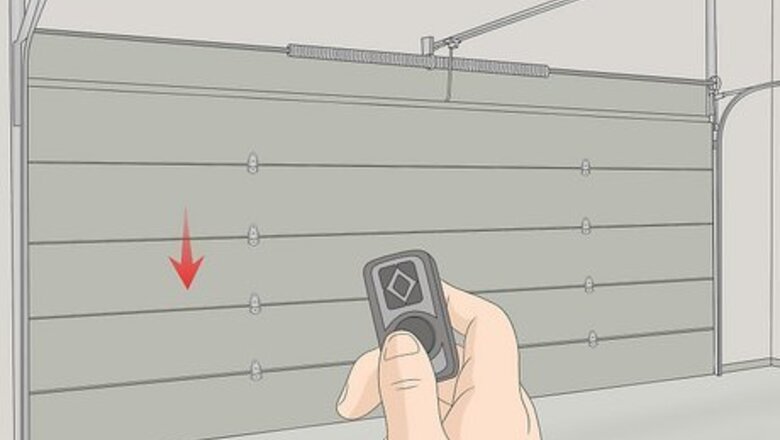
views
X
Research source
- Clean out your door's tracks by using a damp rag and a vacuum. That way, your rollers won't get stuck.
- Use lithium-based grease and garage door lube to clean the moving pieces of the garage door.
- Be sure to clean out the hinges, rollers, bearing plates, lock, and finally, the top of the rail.
Cleaning the Tracks
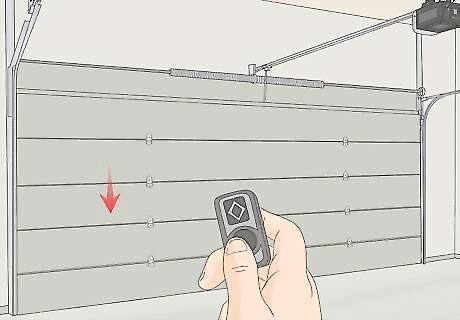
Close the garage door. Use the remote or close the door manually. This will allow you to access the tracks and the rest of the moving parts on your door.
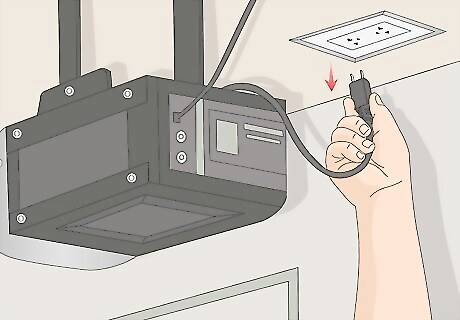
Cut power to the door. Before lubricating your door, you'll want to make sure that it's not on. Disconnect your garage door from the power source after you close it. If the plug to your garage door opener is hard to reach or hard-wired, turn off the breaker that controls it in your circuit box.

Clean out the tracks with a damp rag. The tracks are what the garage door rollers ride on to open and close. You don't want to lubricate these, but you do want to make sure that they are completely cleaned out for your door to operate correctly. Wipe down the inside of both tracks and remove any dirt and debris. Make sure that there is no debris left in your tracks that the rollers can get stuck on. Use an automotive brake cleaner to loosen and wash away grime.
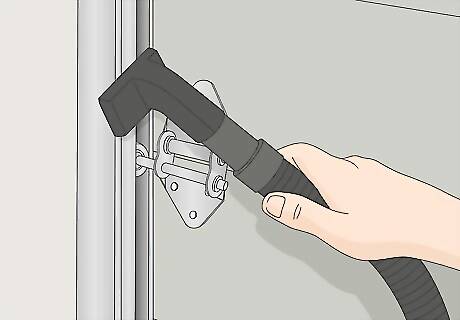
Vacuum out dirt and dust from your tracks. If you are having issues getting debris out of the tracks, you can use a vacuum with a hose extension to suck out the dirt and debris. This is a great solution to reach the higher portion of the tracks that you may be having issues reaching.
Lubricating the Moving Parts
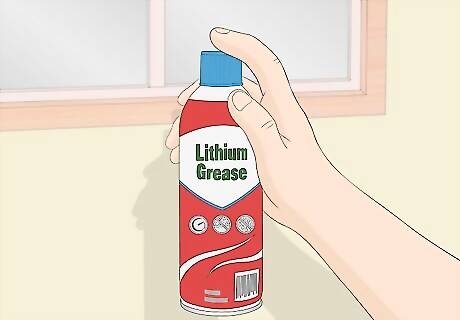
Purchase a lithium-based grease or garage door lube. Popular standard degreasers like WD-40 aren't the best option for a garage door. Instead, purchase a lithium-based grease at a hardware store or online. There are also certain greases that are made specifically for garage doors. Do not use oil. Garage door grease will typically come in an aerosol or spray can. Oil is susceptible to dirt and dust buildup and is more likely to drip than garage door grease or lube. Read the label to make sure that the grease that you are using is appropriate for your doors.
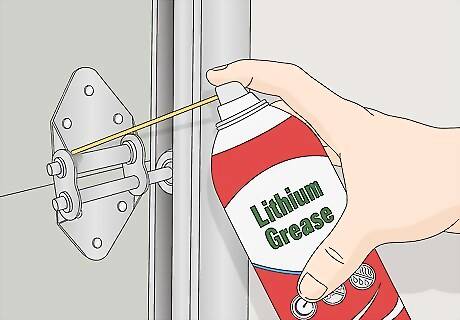
Open your door and spray the lubricant on each of the hinges. Slowly lift your garage door up manually and spray each hinge as it meets the bend of the track. This will lubricate the moving parts on the door and will make opening and closing the garage door much smoother. Use one or two sprays on each hinge. Your hinges should be covered in lubricant.
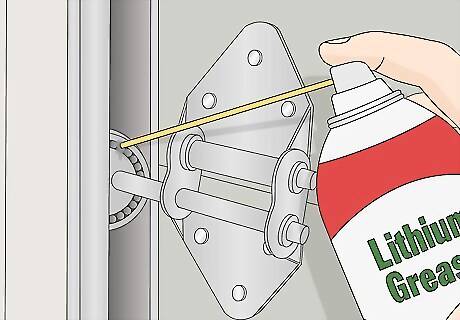
Lubricate the rollers. The rollers are the circular moving pieces on your garage door and are attached to each of your hinges. Inside of these rollers are small ball bearings that need to be lubricated for your door to open and close smoothly. Use the thin hose attachment to spray the grease inside of the rollers. Wipe out any excess lubricant so your door doesn't become unbalanced. Any exposed ball bearings must be thoroughly lubricated. Don't spray any lubricant on nylon rollers.

Spray the outside of your springs and bearing plates. The springs can usually be found at the top of the garage door and must be fully lubricated as well. The bearing plates are the moving circular parts on both sides of the springs. Spray down the outside of the springs and near the center of the bearing plates, then open and close your garage door to spread the grease around. You will most likely need a step ladder to reach the springs and bearing plates. If your springs are making noises, you need to grease your springs. If your springs are damaged or bent, have them replaced before moving on.
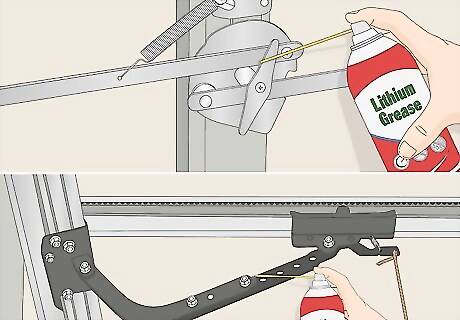
Spray the lock and armbar. Lubricating the lock will make locking your garage door easier, and can prevent rust in the long run. Point the lubricant towards the lock's keyhole and spray it once to lubricate it. Once you're done lubricating the lock, finish lubricating your garage door by spraying the grease on the large armbar at the top of your door.
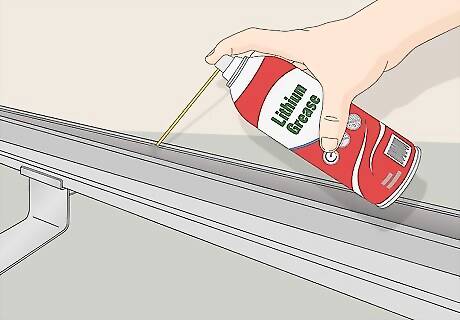
Lubricate the top of the rail. The rail is the portion that your chain rides on and should run along your garage's ceiling. The top portion of the rail is what your chain actually rides along, so it's the part that needs to be lubricated. Spray down the top of the rail and then spread the grease around with a rag. The chain comes with a natural protectant on it that makes it so that you don't have to grease it regularly. Spraying the bottom of the rail doesn't do anything. Consult the owner's manual to see how to lubricate and maintain your specific garage door opener.



















Comments
0 comment